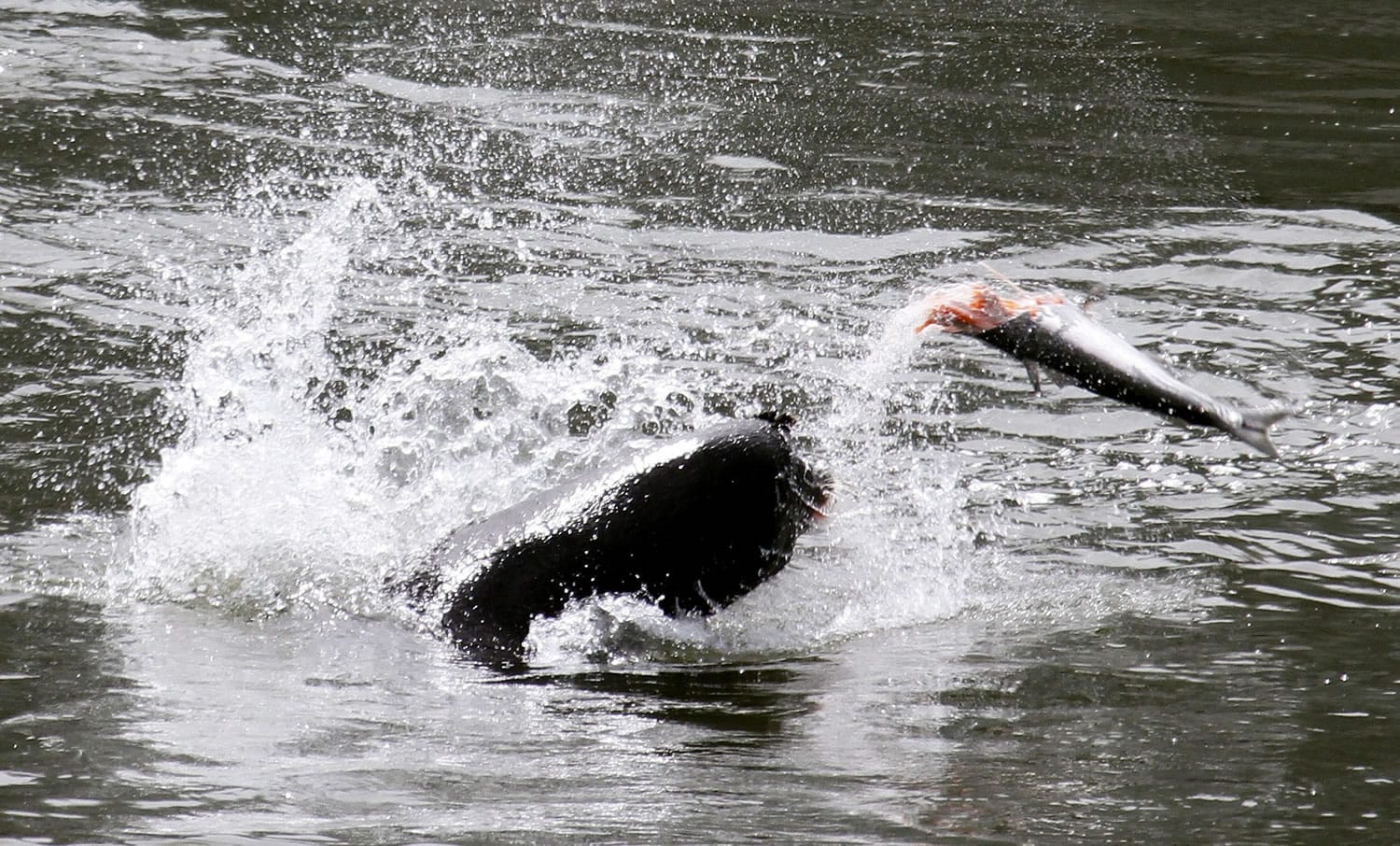Plans to resume killing California sea lions that eat endangered salmon at Bonneville Dam are on hold again.
The states of Oregon and Washington had been set Tuesday to resume trapping and lethally injecting sea lions that eat salmon at the dam, but they instead agreed to hold off pending a hearing Thursday in federal court in Washington, D.C.
The Humane Society of the United States has gone back to court challenging the federal government’s latest approval of the program that has removed 41 salmon-eating sea lions since 2008. The group has twice before won court orders temporarily stopping the killing.
Meanwhile, the spring chinook run the sea lion removal is intended to protect is just barely starting. The Oregon Department of Fish and Wildlife reports just 26 fish over the dam on the Columbia river east of Portland, Ore.
The lawsuit contends that the NOAA Fisheries Service erred when it decided that sea lions eating up to 4.2 percent of the fish passing over the dam amounted to a significant obstacle to the restoration of endangered salmon, when fishermen are allowed to take up to 17 percent. It adds that killing sea lions will have no effect on restoring salmon, which face a greater threat from fishermen and predation by walleye and bass introduced into the river for sport fishermen to catch.
“Rather than the problem growing or increasing, which they keep asserting, it isn’t,” said Sharon Young, marine programs field director for the Humane Society. “The time that an individual sea lion spends at the dam is down. The number of days sea lions spend at the dam is down. The amount of the run consumed is down. It was down last year even though there was no killing authorized.”
U.S. Army Corps of Engineers numbers show the numbers of salmon eaten by sea lions at the dam rose from 4,466 in 2008 to 6,081 in 2010, but that the percentage dropped from 2.9 percent to 2.2 percent in the same period.
Oregon Department of Fish and Wildlife spokeswoman Jessica Sall said the percentage tends to be greatest when the salmon returns are lowest, and that returns have been strong in recent years.



